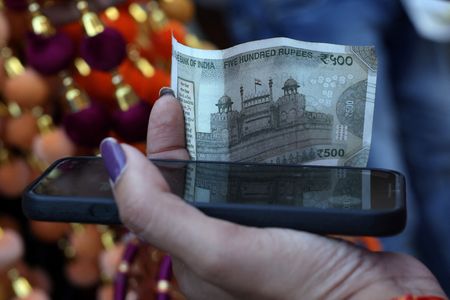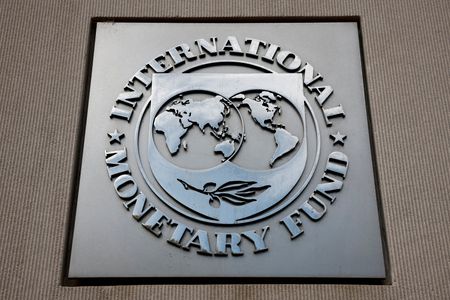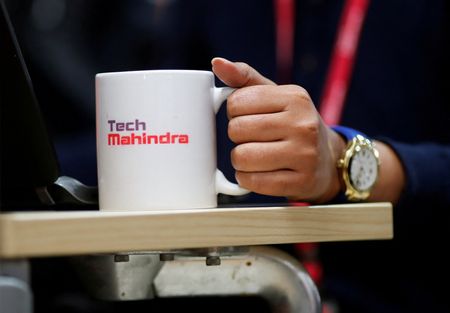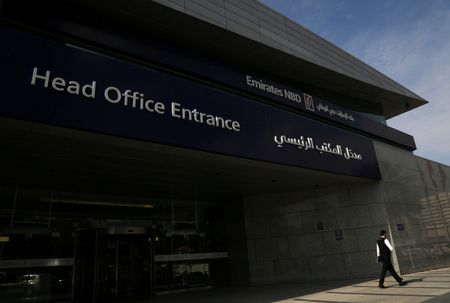By Jaspreet Kalra
MUMBAI (Reuters) -The rupee was anchored near its record low for much of the session on Tuesday as risk appetite waned amid renewed U.S.-China trade tensions, though likely central bank intervention kept the local unit from dipping past its all-time low.
The rupee closed at 88.7975 against the U.S. dollar, down 0.14% on day and within touching distance of its record low of 88.80.
Traders cited persistent dollar sales by state-run banks, most likely on behalf of the Reserve Bank of India, mirroring intervention patterns seen in the last couple of weeks.
A large private bank was also spotted offering dollars near the 88.80 mark, while bids were dominated by foreign banks, an FX trader at a Mumbai-based bank said.
Asian currencies were mostly weaker as well, with the Korean won falling and Thai baht leading declines with a 0.6% and 0.9% fall, respectively.
Global equities were in the red as well, with India’s benchmark Nifty 50 down 0.3% but faring better than the MSCI’s gauge of Asian shares outside of Japan, which was down 1%.
Safe-haven currencies, including the Japanese yen and Swiss-franc, nudged higher on Tuesday.
Weak risk appetite globally added to the headwinds that the rupee is facing on account of steep U.S. tariffs, tighter immigration policies and a sharp rally in precious metals such as gold and silver.
“We think India will eventually secure a lower tariff rate, which should benefit INR over three to six months but for now, the prevailing uncertainty may continue to dampen investor sentiment,” analysts at ING said in a note.
Their counterparts at HSBC also expect the rupee to recover once a breakthrough occurs in U.S.-India trade negotiations but limited visibility on that has prompted them to temper their year-end rupee forecast to 87.50, weaker than the 87 level pencilled in earlier.
(Reporting by Jaspreet Kalra; Editing by Sonia Cheema)











